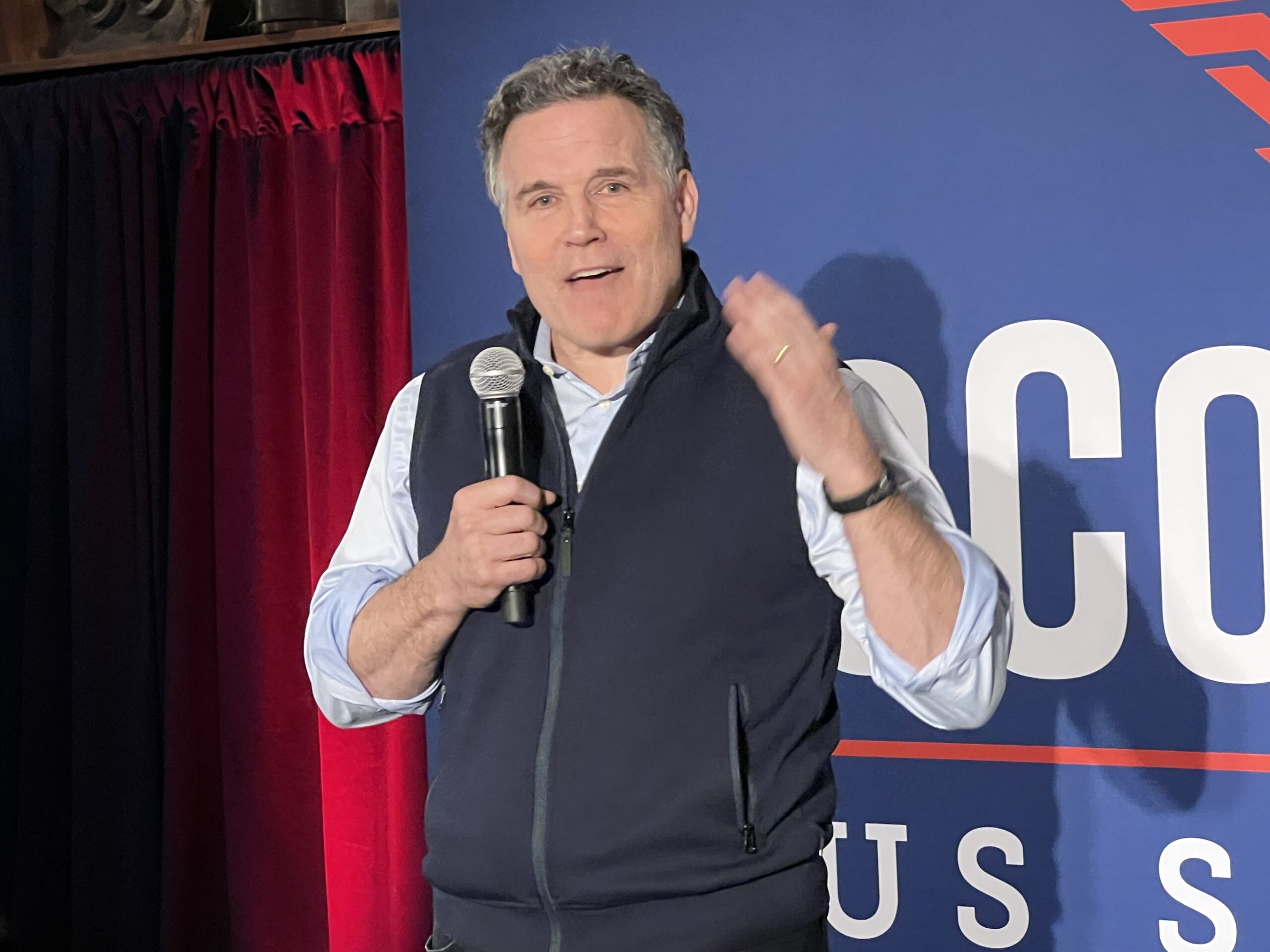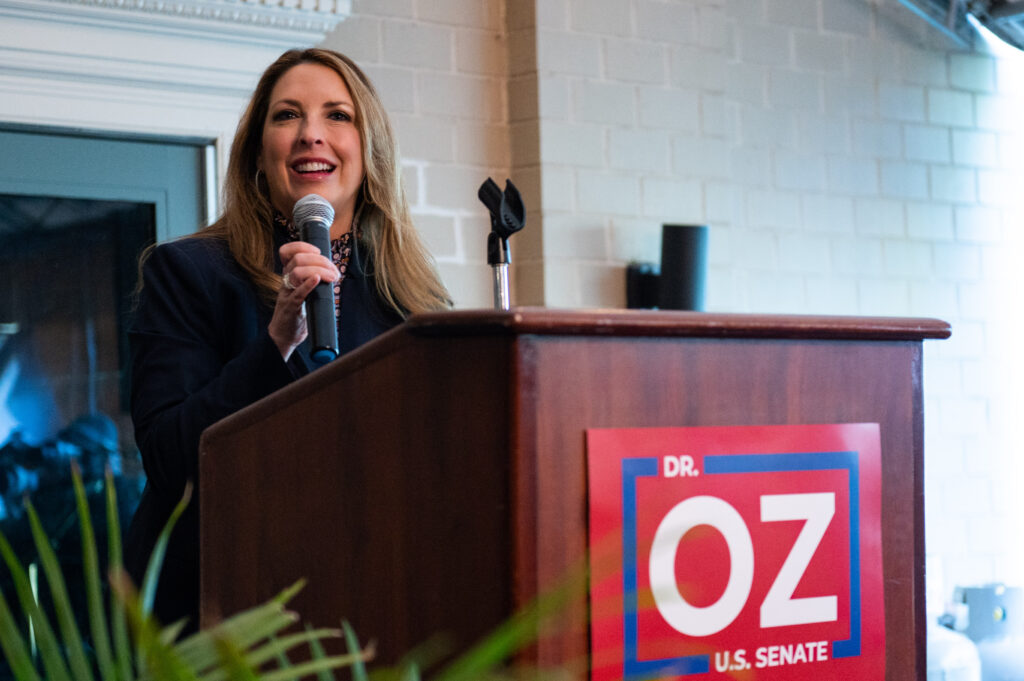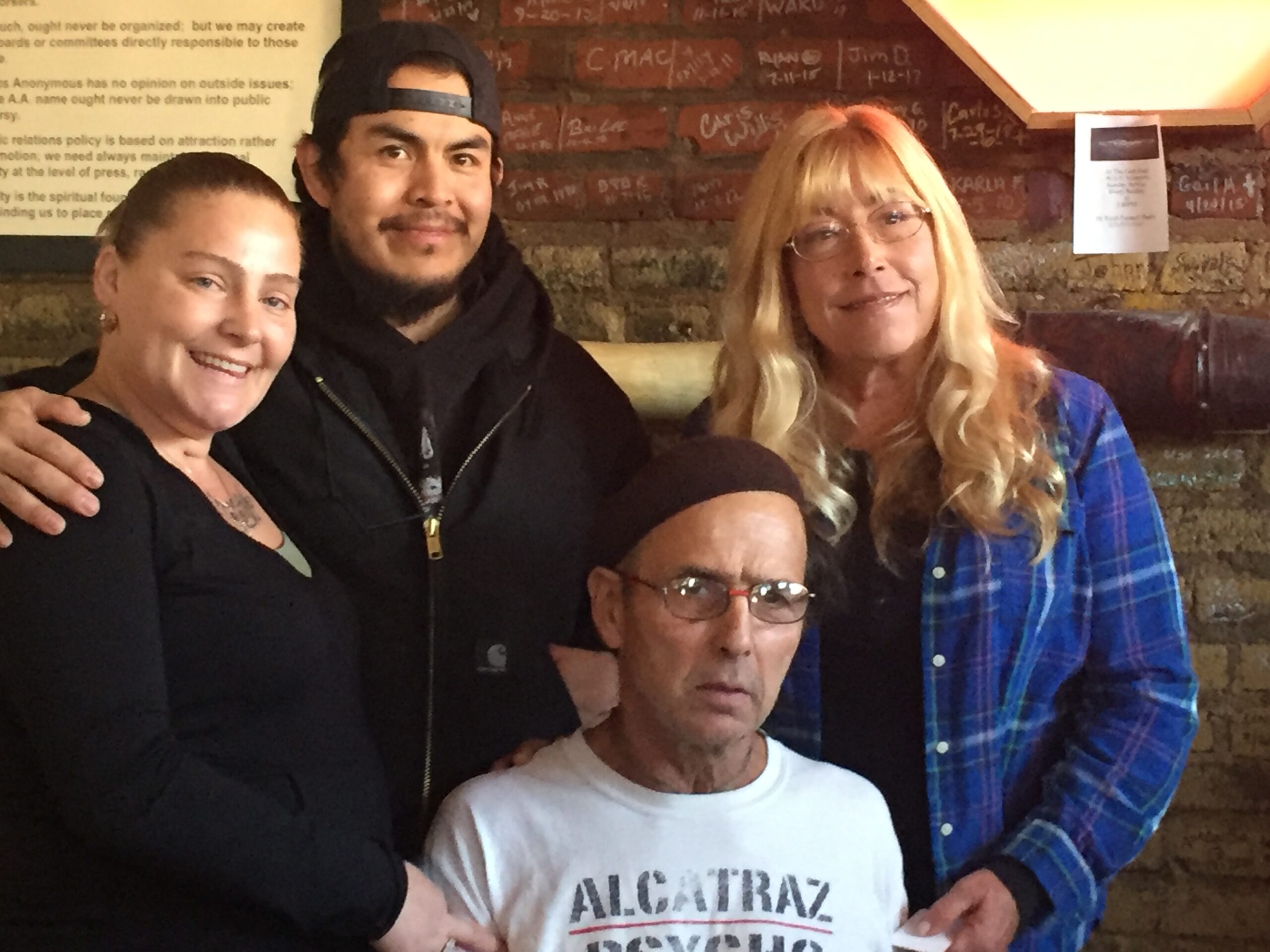McCormick Calls Out Harris on Flip Flops, Casey on Fentanyl Ad

Before President Joe Biden dropped out and made her the party’s presidential nominee, Vice President Kamala Harris opposed fracking and supported the Green New Deal. Now her campaign claims she will allow fracking to continue if she becomes president.
They also say she no longer supports a national socialized medicine plan (“Medicare For All”), and she’s flipped on whether illegal immigration should be illegal (she now says yes.)
During a press availability on Tuesday, DVJournal asked Republican Senate candidate Dave McCormick if Pennsylvania’s swing state voters should trust Harris on important issues like fracking now that she’s changed her mind and now claims to favor it.
“I don’t think so,” said McCormick.
The Republican candidate referenced one of his own campaign ads about Harris’s record, which has garnered more than 4 million views.
“The ad has Sen. Casey saying ‘she’s ready to be president. You’re going to love her when you get to know her.’ And it had a minute of her in her own words…She says, ‘I want to ban fracking. And I want to want to transition energy workers. I want to legalize illegal immigration. I want to be sure illegal immigrants get federal benefits.’ She said, ‘I want to have mandatory buybacks of guns. I want to eliminate private healthcare insurance.’ All in her own words. You can see the ad. And she said she wanted the government to get involved in reducing meat consumption. Red meat.”
“So listen, the Pennsylvania I grew up in and know well, that agenda isn’t resonating,” added McCormick.
“And on the fracking, she has said time and time again she embraced the green agenda, which meant huge, heavy subsidization of solar and wind at the expense of fossil fuels and the EPA mandate that happened when she was vice president, that 80 percent of all light vehicles will be electric vehicles by 2032. Even Elon Musk doesn’t support that.”
McCormick noted his Democratic opponent, incumbent Sen. Bob Casey Jr., voted with the Biden-Harris administration 98 percent of the time.
“So Pennsylvania has 600,000 people that are in the energy industry or have jobs that are derived from there. No, I don’t think they should trust that she or Sen. Casey are going to be strong advocates of unlocking our potential natural gas reserves, in particular in Pennsylvania.
“And the reason I think that’s such a big issue is it’s critical to our national security, it’s critical to Pennsylvania’s economic wellbeing,” McCormick said. “And it’s great for the environment. I’m an environmentalist. I believe in climate change. The way to reduce carbon emissions is to export our natural gas, where replaces coal-fired plants in India and China. None of those things are going to happen under Harris-Casey. The reason you should know that is they’ve proven it.”
Another reporter asked Harris’s sudden support for a policy promoted by her opponent, Donald Trump: eliminating the tax on tip income. McCormick said he favors it but hasn’t studied it closely. And, he added, Harris’s willingness to seize on a Trump policy she had never mentioned before is yet another sign she’s simply saying whatever it takes to get elected.
“I think it was interesting that Kamala Harris embraced that,” said McCormick. “If you’re going to embrace something, you should say, ‘It’s a good idea that President Trump had.’ That you would simply just grab that idea and then not acknowledge where it came from when she was part of an administration that was expressly saying they wanted to enforce through 80,000 new IRS agents the fact that people in the service industry should be taxed on tips.
“That turnaround is exactly like the fracking,” McCormick added. “You don’t get to say, ‘I’m for a new thing’ without explaining how your position’s changed, why it’s changed and why the voters should trust you. I don’t think the voters should trust her on banning fracking, and I don’t think they should trust her on that.”
Asked about President Joe Biden’s ideas to impose term limits and congressional oversight on the U.S. Supreme Court, McCormick said, “I’m by and large opposed to those proposals. The reason is we have a situation here where I think expressly President Biden and Vice President Harris were embracing an agenda that would pack the Supreme Court.”
And that’s because they “don’t like [its] composition,” he said.
A former CEO of Bridgewater Associates, one of the world’s largest hedge funds, he also pushed back on attack ads Casey is running saying McCormick invested in a Chinese company that manufactured fentanyl. It turned out that Casey also had shares in that company through a mutual fund.
“Sen. Casey lied about it,” McCormick said. “Most Americans who own 401(k)s own some exposure to global stocks. And those global stocks are represented in countries around the world, usually China because China is such a big part of the economy. That’s essentially what Bridgewater did. It had an index that included global stocks. So, Bob Casey and Bridgewater — not Dave McCormick — Bridgewater owned part of a pharmaceutical company that sold to China a legal painkiller, which is fentanyl.
“It was an accusation which was an absolute lie. It’s not illegal fentanyl. And then Bob Casey, the ultimate liar and hypocrite, we discovered owns the same thing in his personal portfolio.”
“This guy’s lying, and he’s a hypocrite because he doesn’t have a record to run on,” said McCormick.
The Casey campaign did not respond to a request for comment.












 Zampitella, 65, spoke to the Delaware Valley Journal in the club, where free peanut butter and jelly sandwiches are handed out for lunch. Spaghetti or hot dogs and beans might be on the menu for dinner. A Saturday dessert favorite is banana splits. The food, along with water, is free. Coffee is 75 cents and soda is $1.
Zampitella, 65, spoke to the Delaware Valley Journal in the club, where free peanut butter and jelly sandwiches are handed out for lunch. Spaghetti or hot dogs and beans might be on the menu for dinner. A Saturday dessert favorite is banana splits. The food, along with water, is free. Coffee is 75 cents and soda is $1.

